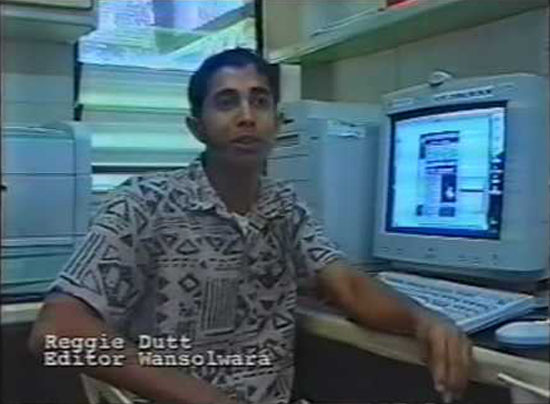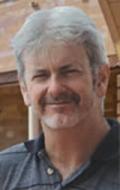FLASHBACK: This article was originally published in the PANPA Bulletin, February, 2001.
The United States has its Pulitzer prizes. Australia has the Walkleys. And journalism education in the region has the Ossies, the Journalism Education Association’s awards recognising excellent journalism produced by students.
The JEA is Australia-based and most of its members teach at the numerous journalism programmes throughout the nation, although each year several students from New Zealand and the Pacific enter the awards.
The awards are named after journalist Osmar S. White and are funded from his estate through the generosity of his daughter, journalist and author Sally A. White.
Despite the overwhelming Australian membership of the JEA, the awards announced at the association’s annual conference on Queensland’s Sunshine Coast in December were dominated by entrants from the Pacific and New Zealand.
Journalism students from the University of the South Pacific under the leadership of course co-ordinator David Robie won two of the major awards and were highly commended in four others for their reporting of the Fiji [George Speight] coup. There are 12 categories in all.
Sean Scanlon from the University of Canterbury in New Zealand won the award for best print feature for a postgraduate student as well as the JEA executive’s prize for the best story in any medium.
Leading industry personnel judged the awards, and all praised the efforts of the University of the South Pacific students for their coverage of the coup.
The Pacific students’ Pacific Journalism Online website devoted to daily coverage of the coup won the Dr Charles Stuart Prize for best student publication in any medium while the Pacific students’ print edition, Wansolwara, was awarded a highly commended in the same category.
Pacific Journalism Online also won the award for the best regular publication.
Category judge, deputy editor of The Age Online, Mike van Niekerk, said the student journalists working on the publication rose to the challenge of providing high quality reports of a dramatic international news event on their doorstep.
“They did so in challenging circumstances and by providing these reports on the internet they were one of the few sources of information at critical times of the events taking place,” he wrote in his judge’s comments.
“As such, the quality of writing is of a high standard for students. Taken as a body of work it is very impressive.”
The Pacific theme continued, with the University of Queensland’s East Timor Project highly commended in the best student publication category and taking out the award for best occasional publication.
Lyn Barnier of the University of Newcastle won the best print news story category.
Losana McGowan of the University of the South Pacific was highly commended in the category.
Judge Chris McLeod, editorial development manager at the Herald and Weekly Times, Melbourne, said the student found herself at the centre of a world-class story.
“Her report was a very good descriptive piece about a meeting between students and coup leader George Speight, capturing the feelings of the young people whose safety obviously was at risk,” McLeod wrote.
The University of the South Pacific also featured in the high commendations for the best television news story category, with a piece by student Christine Gounder on Fijian soldiers contracting malaria while on a tour of duty in East Timor.
Gounder presented a balanced report on a newsworthy issue and explored its implications on a national basis, said judge Katherine Swan, a journalist with the ABC in Melbourne. She awarded first prize to Mia Scacciante from Queensland University of Technology for a story on the republic referendum in Australia.
Swan also judged the award for best television current affairs by an undergraduate student, which went to Tracey Galloway of the University of Southern Queensland for a report on battery hens.
News director at K Rock, Geelong, Rob McLennan, judged the best radio news story category, won by Michelle Fraser of the University of Queensland.
Tamani Nair of the University of the South Pacific, who “handled a risky situation” well while covering the coup, was highly commended.
He also judged the award for best radio current affairs by an undergraduate student which went to Kathleen Donaghey of the University of Queensland. Queenslanders took out the trifecta of radio awards with Alyssa McDonald of QUT winning best broadcast current affairs story by a postgraduate student.
Editorial training manager at News Limited in Sydney, Sharon Hill, judged the best feature story categories.
Carly Marshall-Vaughan of Deakin University won the undergraduate category for a feature on the regulation of animal experiments, while Sean Scanlon of the University of Canterbury won the postgraduate prize for his piece on a New Zealand academic who repudiated his own doctoral thesis on the Nazi persecution of the Jews.
“He dissects the tale with a surgeon's precision, piling detail upon detail in a controlled narrative sequence,” Hill wrote in her comments.
“By the end of the story, when the academic has destroyed his own credibility, Mr Scanlon remains the cool assessor rather than the accuser." The feature also earned Scanlon the Sally A. White Award for best story in any medium.
USP international journalism awards




